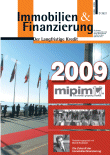Nicht nur durch sinkende Absätze und Zahlungsverzögerungen im Zuge der Finanzkrise sind Industrieunternehmen in finanzieller Bedrängnis. Auch für dringend benötigte Investitionen in moderne Produktionsanlagen und die Expanison in neue Märkte werden keine oder nur spürbar verteuerte Kredite gewährt. Als Ausweg bleibt mitunter nur der Verkauf des "Tafelsilbers" wie zum Beispiel Immobilien. Da deren Drittverwendungsfähigkeit aber oft eingeschränkt ist, wäre der erzielbare Preis gering, der Kontrollverlust über die Immobilie jedoch hoch. Als Lösung empfiehlt der Autor den Verkauf der Firmengebäude an einen langfristigen Investor, und das gleichzeitige Zurückmieten der betriebsnotwendigen Immobilien. (Red.)Asset-based borrowing has long been a prevalent form of financing for corporations with significant corporate real estate holdings as well as private equity firms and management groups looking to finance the acquisition of these types of companies. Although the volume of new acquisitions has dropped precipitously due to the limited availability of capital sources in the current credit environment, asset-based financing continues to be a viable source of funding for companies with strong management and solid business strategies. Sale-leaseback as a form of corporate financing The long term sale-leaseback is a form of asset-based financing that allows companies to access the market value embedded in their corporate real estate assets and convert it to a liquid source of capital that can be used to retire existing debt, fund operating costs, support expansion strategies or some combination of all three. The basic premise of the sale-leaseback is that a corporation sells its real estate to an investor who then leases the property back to the company on a long term basis; thereby allowing the company to retain operating control of the property. Another significant advantage of the long term sale-leaseback is that financing of 15 to 20 years with additional renewal options can bridge credit cycles. Consequently chief financial officers and corporate investors have the ability to better predict their ongoing financing costs despite the unpredictable and cyclical nature of the debt markets in the shorter term. The selction of the best buyer In contemplating a sale-leaseback the seller/tenant needs to look at the financial strength and structure of the buyer, its track record in the sale-leaseback industry, the objectives and reliability of the buyer's capital sources and the buyer's understanding of the selling company's industry, business and operations. For a corporate property owner to enter into a long term transaction with a speculative buyer looking for a short term gain is a recipe for disaster. Everything from initial deal terms to ongoing decisions with respect to the asset will be viewed from conflicting perspectives. Long term assets should be financed by investment firms with shareholders whose objectives are to generate steady income and assure capital preservation over the longer term. Although one source of funding for current sale-leaseback transactions is private sale-leaseback funds whose institutional investors are looking for market driven shorter term gains, another source is income-oriented REITs that invest in sale-leasebacks structured for individual retail investors who are committed to a longer term investment strategy. Because of their longer term investment objectives, income-oriented REITs tend to be a more complementary source for long term sale-leaseback financing. The necessary abilities of the investor However, a company that "sells" a key operating facility needs to know that in addition to having compatible long term objectives, the buyer is capable of closing the transaction on a timely basis. The buyer's ability to structure a transaction within sale-leaseback contractual parameters while addressing the specific operating and financial requirements of the company is also a critical factor for the seller/tenant. Lastly, the buyer must also have the financial expertise to determine independently that the company's operations will support the rental obligations to the buyer and also generate a profit for the company. The analysis of the seller/tenant in sale leaseback Because risk management should work both ways when it comes to sale-leaseback transactions, the buyer needs to determine the strength of the seller/tenant's current and projected financial position as well as its current and planned business/operating strategy. The capabilities of its management team, the health of the company's industry and its position within that industry should also be key components of the buyer's analysis. Sale-leaseback financings that incorporate these types of analyses and due diligence on the part of both the corporate seller and financial investor are those that will achieve success for all parties over the "long term".
Sie befinden sich hier: Home › Immobilien & Finanzierung › Ergänzende Informationen › Archivdaten › Corporate properties as a liquidity reserve - how it can be activated?
